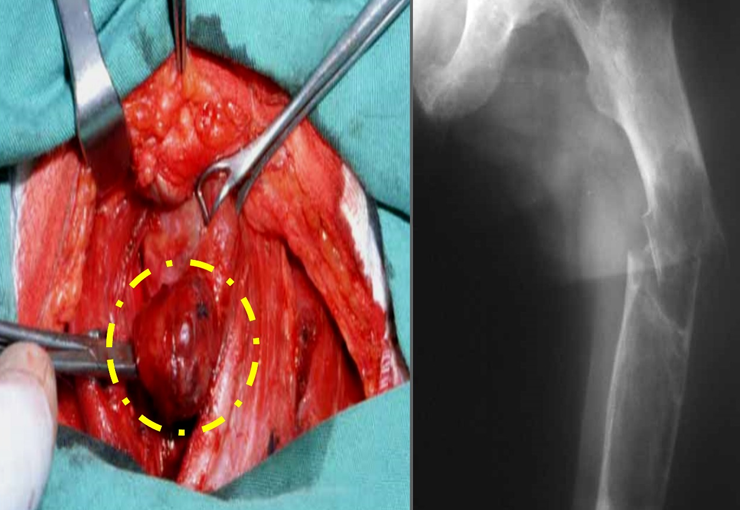Pathological Bone Fracture
Clinical Aspects, Diagnosis and Classification
In our experience dedicated to the study and treatment of patients with bone diseases, we have repeatedly come across cases of fractures that, in turn, concealed previously undiagnosed underlying pathological conditions. The simplified designation of “pathological fracture” may be inappropriate, since every fracture is, in fact, a pathological process. In this sense, it is more appropriate to use the terminology “pathological bone fracture”, which is often associated with neoplasms, whether primary or metastatic.
The pathological processes that can culminate in fractures are varied and range from bone dysplasias to circulatory disorders, including degenerative, inflammatory, infectious or neoplastic changes. For an accurate diagnosis, it is essential to consider the patient’s clinical aspects, the fracture mechanism, the results of imaging exams, laboratory tests and anatomopathological findings.
Bone fractures that mask underlying pathological conditions may result in inappropriate orthopedic interventions, highlighting the importance of a meticulous diagnostic approach.
We will classify in a didactic way, within the five chapters of General Pathology, the various underlying bone disorders:
- Bone Dysplasias: These changes encompass congenital or hereditary disorders that affect bone morphology, which may result in deformities and/or fractures. We highlight, among others, osteogenesis imperfecta, osteopetrosis and fibrous dysplasia, each with its distinct clinical and radiological characteristics.
- Metabolic Changes: The balance between the processes of bone formation and resorption is essential for maintaining bone structure. Disorders such as osteoporosis, osteomalacia and hyperparathyroidism can lead to a decrease in bone density, increasing the risk of fractures.
- Degenerative Diseases: These include conditions such as Langerhans cell histiocytosis and lipidosis, which can compromise the structure and integrity of bones, predisposing to the occurrence of fractures.
- Circulatory Disorders: Paget’s disease is a significant example, characterized by abnormal bone remodeling due to intraosseous circulatory disorders, which can result in spontaneous fractures or due to mild trauma.
- Blood Dyscrasias: In rare cases, blood disorders such as leukemia or hemolytic anemia can cause extensive bone infarcts, increasing the risk of fractures in pathological bones.
In summary, understanding the relationship between fractures and underlying pathological conditions is crucial to ensure an appropriate therapeutic approach and minimize complications. An accurate diagnosis and appropriate classification of underlying conditions are critical to guiding treatment and improving clinical outcomes for patients.
Author: Prof. Dr. Pedro Péricles Ribeiro Baptista
Orthopedic Oncosurgery at the Dr. Arnaldo Vieira de Carvalho Cancer Institute
Office : Rua General Jardim, 846 – Cj 41 – Cep: 01223-010 Higienópolis São Paulo – SP
Phone: +55 11 3231-4638 Cell:+55 11 99863-5577 Email: drpprb@gmail.com

